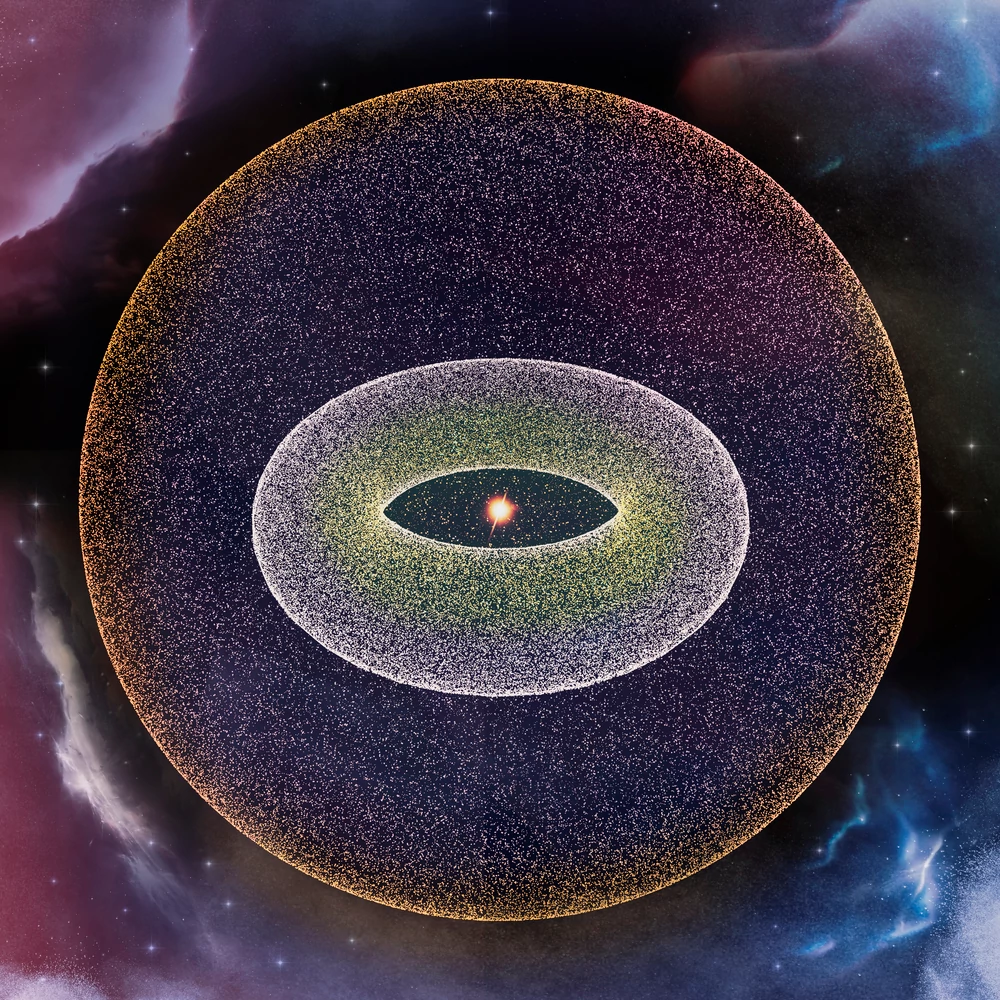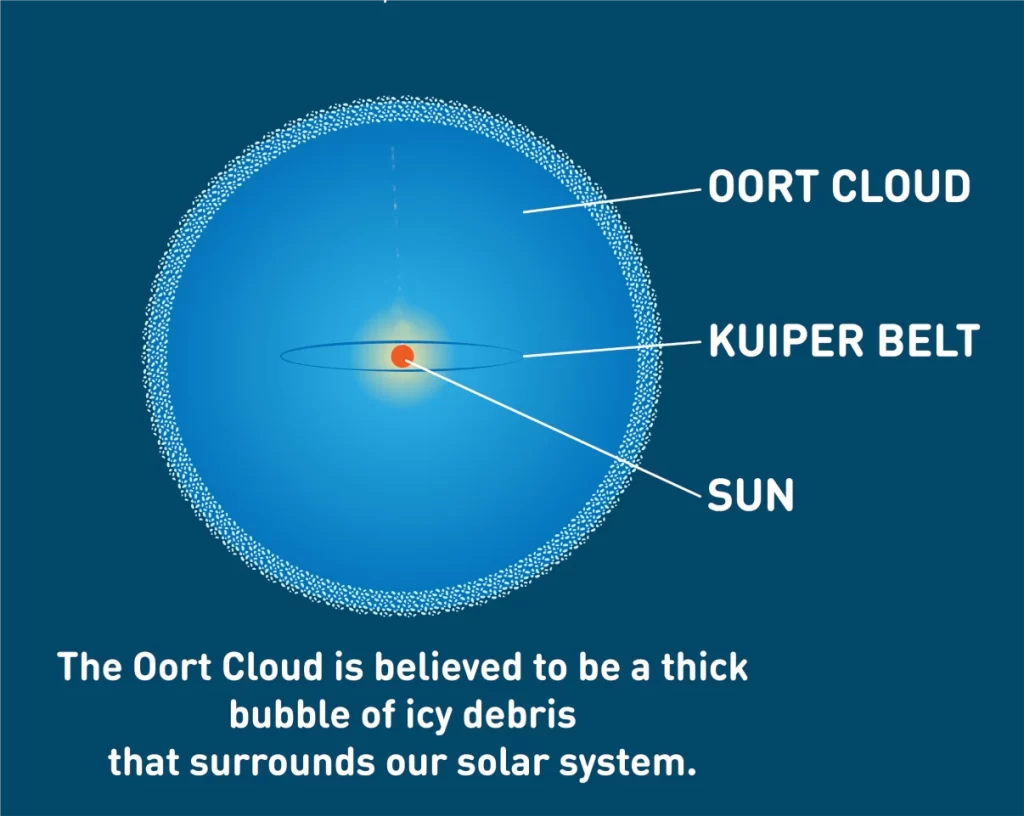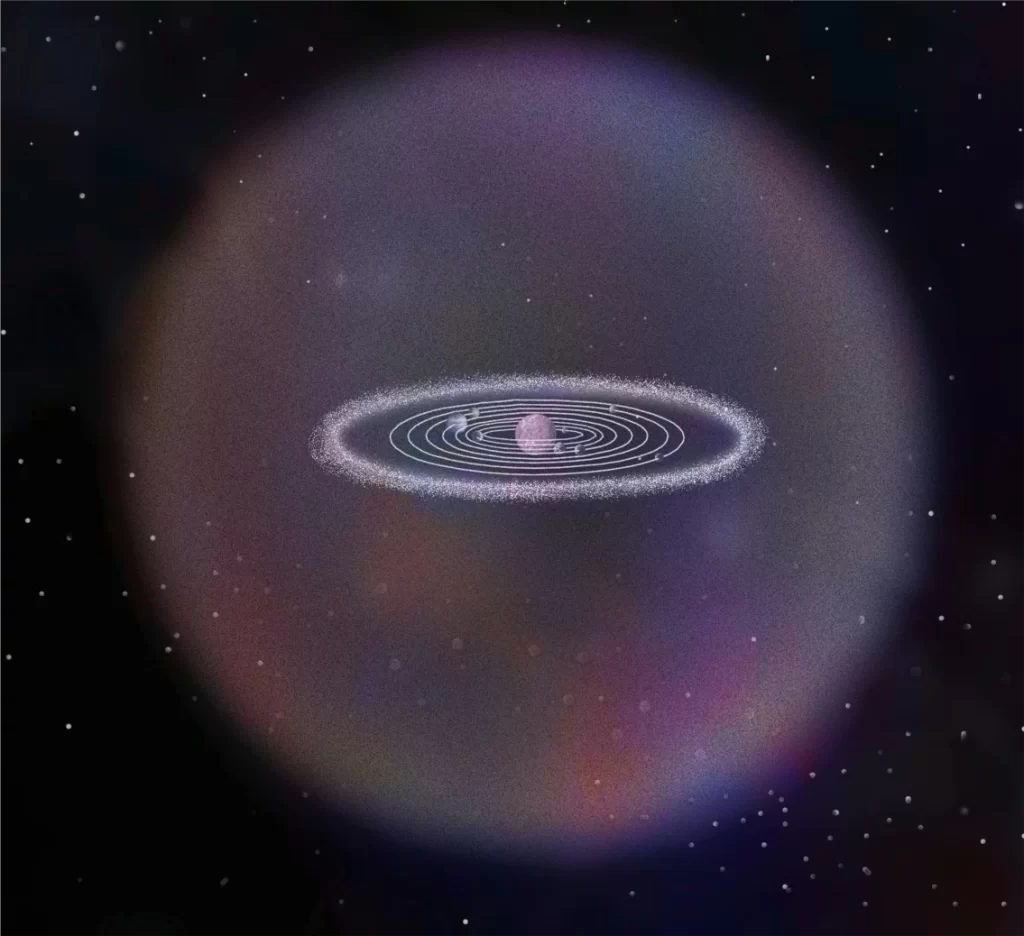Astronomers have long wondered where comets came from. Where would something made of frozen gases, rock, and dust originate only to be observed and then reappear after a very long time or sometimes never to be seen again? It’s theorized that there is something on the outer reaches of our solar system where these galactic bodies are born, and it’s called the Oort Cloud.
The Oort Cloud is thought to be a giant spherical shell around the entire solar system. It is the most distant outer region of our solar system, lying far beyond the Kuiper Belt, a donut-shaped region containing icy bodies past the orbit of Neptune. It is also thought to have billions, and maybe trillions, of icy objects floating in it, with some the size of mountains. But even though it’s in our general neighborhood in the galaxy, many things about the Oort Cloud are unknown.
The Oort Cloud is believed to be the source of comets since the orbits of comets are so long. However, this is just a theory since no object has ever been observed in the Oort Cloud. One reason is that the distance to the Oort Cloud is enormous.
The orbit of Pluto is about 30 astronomical units (AU) from the Sun at its closest point and about 50 AU at its farthest point. One AU, by the way, is the average distance from the Earth to the Sun (around 92.9 million miles or 149.6 million km). By comparison, the closest edge of the Oort Cloud is believed to be between 2,000 and 5,000 AU from the Sun, with the outer edge possibly being 10,000 to 100,000 AU from the Sun. This means the cloud could be between 185 billion miles (299 billion km) on one edge to 9.3 trillion miles (14.9 trillion km) to the outer edge from us.
This also means the outer reaches could be halfway between the Sun and the next closest star. Voyager 1 won’t get to the edge of the Oort Cloud for another 300 years, even though it’s traveling about a million miles per day.
The leading explanation for the formation of the Oort Cloud is that leftover chunks called planetesimals, which were remnants of the planets after they formed 4.6 billion years ago, were scattered by the planets’ gravity. These icy planetesimals went in all directions, with some being flung out of the solar system, while others went into eccentric orbits that were held by the Sun’s gravity and the tidal force from the galaxy itself.
The orbits of objects in the Oort Cloud don’t move in one orbital plane like a planet or things in the Kuiper Belt. The objects in the Oort Cloud move at different inclinations, going over and under the Sun as they orbit. This is why the Oort Cloud is considered a cloud and not a belt. The Oort Cloud can also capture objects that come from somewhere outside our solar system.
The cloud was named after the Dutch astronomer Jan Oort, who proposed the existence of it as an origin for comets and to help explain why comets come from many different directions and don’t follow an orbital plane as asteroids and planets do. The Oort Cloud is believed to be why some comets have such long orbital periods, with some comets only being recorded once in history and others that could have passed through our solar system well before humans existed and still have not yet returned.
Sources: NASA (1), NASA (2), Phys.org, Space.com
More Reading
A Beginner’s Guide to Black Holes




